Don’t you hate it when someone claims to have a magical new technology, but won’t tell you how it works? When I saw that a super stealthy startup called Magic Leap had raised $US542 million to make animals appear out of thin air, I resolved to find out exactly what was going on. Here’s what I found.
If the results of my digging are correct, this is what Magic Leap intends to build: a Google Glass on steroids that can seamlessly blend computer-generated graphics with the real world. A headset packed with fibre optic projectors, crazy lenses, and loads of cameras. An augmented reality that you’ll actually believe in.
But I’m getting ahead of myself.
The story so far
As far as the media was concerned, Magic Leap didn’t exist until it raised buckets of cash. In February, VentureBeat reported that the mysterious firm had secured $US50 million to build a “game changing” technology that would “forever change the way we interact with images and information,” in the company’s words.
That sounds like the typical hype-cycle bullshit, but the names behind the company were worth paying attention to: Rony Abovitz, who had just sold his medical robot company MAKO Surgical for $US1.65 billion, and Richard Taylor of Weta Workshop, the company behind all those amazing props and creatures in Lord of the Rings, The Hobbit, District 9, and more.
In March, Magic Leap got another huge shot of credibility when veteran game designer Graeme Devine signed on to build an entire game studio around the mystery tech. And it got yet another in April when veteran tech marketing chief Brian Wallace joined up. He’s one of the men responsible for Samsung’s wildly successful “Next Big Thing” ad campaign. These are people who could choose to work anywhere. They chose Magic Leap.

Magic Leap says it wants to bring magic back into the world.
It wasn’t until last month, when Magic Leap announced $US542 million in funding from Google — and Qualcomm, and Legendary Pictures, and venture capital bigshots Andreessen Horowitz, Obvious Ventures, and KPCB — that journalists really perked up their ears. (It’s not every day that Sundar Pichai, the man in charge of all of Google’s products, joins the board of a startup company.) But still, all that Magic Leap would tell those who asked is that it will be part of a “lightweight wearable” that transcends the concepts of virtual reality and augmented reality. Speaking to David Lidsky at Fast Company, Abovitz would only say what Magic Leap is not:
“It’s not holography, it’s not stereoscopic 3-D,” he says. “You don’t need a giant robot to hold it over your head, you don’t need to be at home to use it. It’s not made from off-the-shelf parts. It’s not a mobile phone in a View-Master.”
The best description we have so far comes from the company’s press release: “Using our Dynamic Digitized Lightfield Signal™, imagine being able to generate images indistinguishable from real objects and then being able to place those images seamlessly into the real world.”
Thankfully, that description is just the tip of the iceberg.
Where did Magic Leap come from?
As best as I can tell, Magic Leap wasn’t originally a tech startup at all. When I rode the Wayback Machine to 2010, the first stop was a fairly threadbare website for a company called Magic Leap Studios. Though the Magic Leap of four years ago already had a relationship with Weta Workshop, augmented reality didn’t seem to be the goal: Magic Leap claimed to be working with Weta on a graphic novel and a series of feature films.

They would be based on a new intellectual property called “Hour Blue,” which seems to be set in a dystopian world nearing the Singularity. Prominent comic book duo Dan Abnett and Andy Lanning had signed on to help flesh out the idea.
Oh, now might be a good time to mention that Magic Leap Studios was also an independent record label. Their band, Sparkydog & Friends, appears to include Abovitz, his wife Debb, former MAKO Surgical director of robotics Arthur Quaid, and current Magic Leap patent holder Graham MacNamara. Mick Glossop produced their album. It’s not terrible!
But by 2011, Magic Leap started looking a lot less like Abovitz rounding up friends to have some fun. In May of that year, Magic Leap became a corporation. At Comic-Con that July, it released an augmented reality app called Hour Blue, a first step towards a new goal to “bring cinema into the physical world.”
By October, the company’s website had become a professional, secretive affair, and Magic Leap started calling itself a technology company. Or rather, a “digital media and technology company that developers and delivers proprietary content through its platform and vision of Social Cinematic Experience and Collective Imagination.” Gosh, that’s a mouthful.
“We are keeping a bit of a low profile as we are busy at work building something that we think will be pretty cool (and we hope that you will think so too),” wrote Magic Leap in 2011.
What changed?
I don’t know what prompted the shift, but if I had to hazard a guess: Rony Abovitz probably ran into Eric Seibel from the University of Washington.
For well over a decade, Professor Seibel had been developing an awesome new endoscope that uses a single optical fibre to safely see into tinier crevices in the human body than ever before. Using a piezoelectric to vibrate the tip of the fibre in a spiral pattern, it “scans” a much higher resolution image than you’d normally expect. And it’s just the sort of tool that a medical robotics company like Abovitz’s MAKO Surgical might consider using.
What does that have to do augmented reality, though? Well, if you’re already firing light down a vibrating optical fibre in a spiral pattern to form an image, that exact same system can double as a fibre optic projector. And that’s where things get interesting.
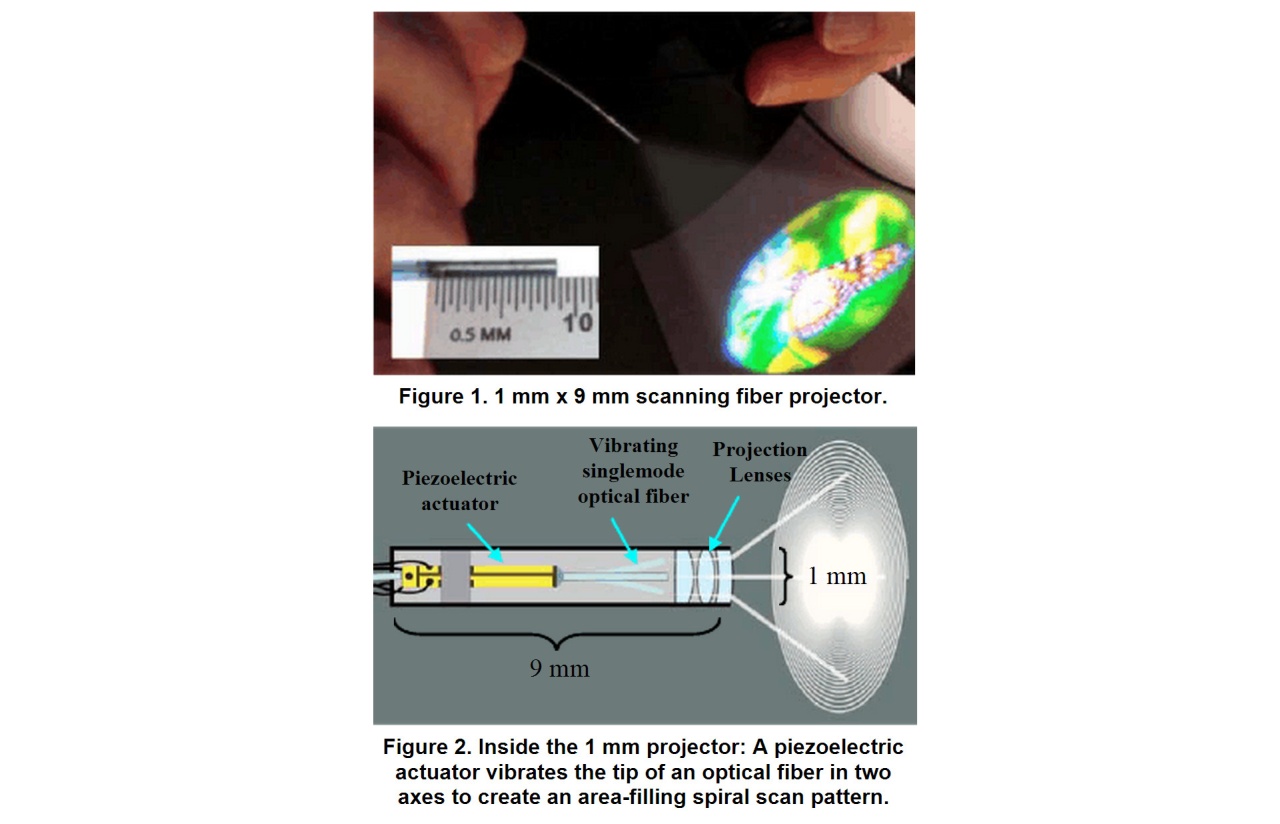
Seibel’s team was working on just such a projector. They even tried it out in some prototype head-mounted displays. They found that it could be way more practical and cheaper than tiny LCD or OLED panels, with the added benefit that you can run the fibres down to a pocket-sized pack instead of wearing them on your head. They theorized that it could even get small enough to fit inside a pair of glasses.
Which is probably why Magic Leap hired Seibel’s research partner Brian Schowengerdt. And also probably why Schowengerdt helped Magic Leap win a $US150,000 grant from the Department of Defence to create an ultra high-res 4K version of the fibre-scanning display tech. And lastly, it’s almost definitely why many of Magic Leap’s patent applications are about how to bounce the light from those fibres into your eyes in a convincing way.
Intellectual property
Patent applications rarely tell you what a company is actually working on — only where it wants to legally stake a claim. Patents are hardly proof of anything, but they do give you some idea of a company’s general areas of interest. And Magic Leap’s patents might explain how the company might go from A.) merely projecting images onto your eyeballs, to B.) making a 3D, computer-generated elephant appear to exist in the real world.
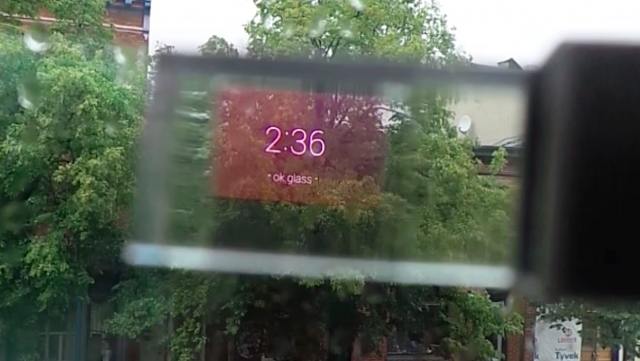
What you see through Google Glass (via Phandroid)
Believable augmented reality is hard. If you’re looking at the real world, your eyes are focusing at a variety of different distances, not necessarily on a tiny piece of glass right in front of your face. The real world also reflects a lot of light into your eyes, which is why the images from heads-up displays like Google Glass appear transparent and ghostly. Because you need to see the real world, you obviously can’t have a projector covering the front of the glasses: that light has to be bounced in from the side, which generally results in a narrow field of view.
And of course, you need some way to track your head and your surroundings so that CG objects appear to occupy a real place in the world, instead of looking like a flat image — which, sadly, is how many existing augmented reality specs do it.
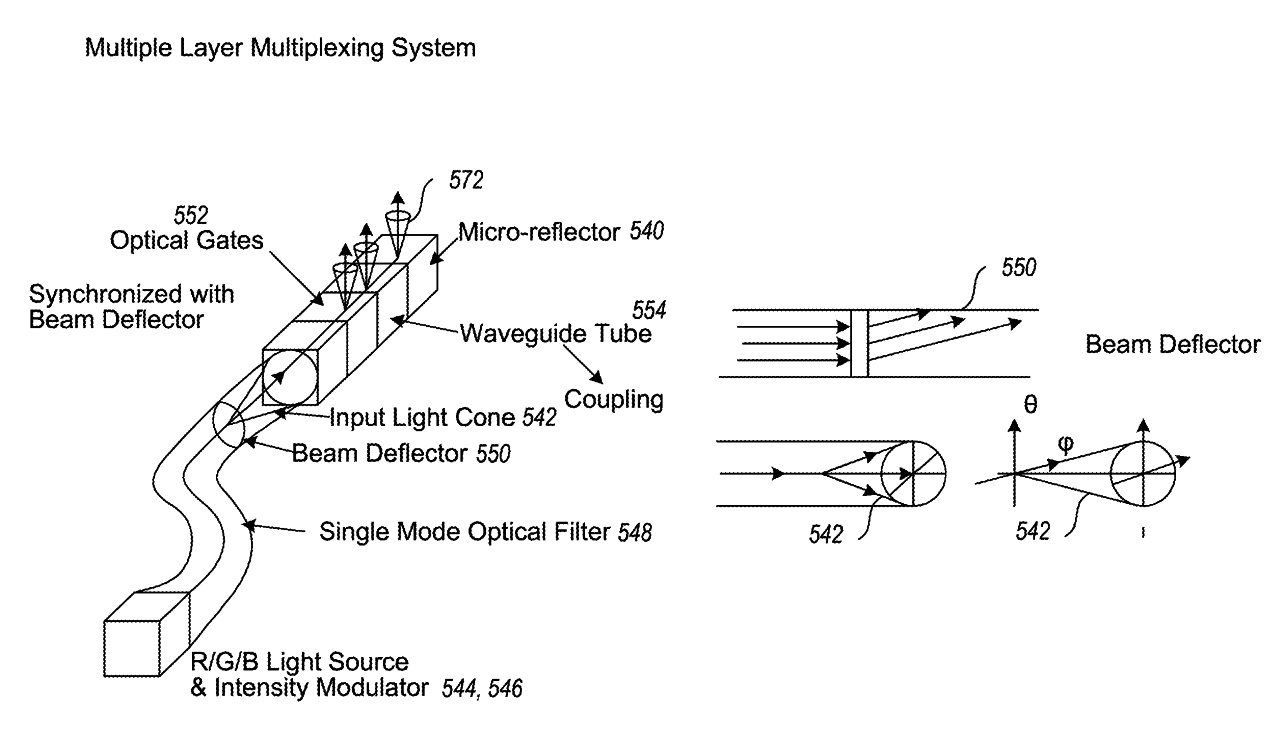
Magic Leap’s patent applications cover potential solutions for all these issues. This one explains how the company could use an LCD “occlusion mask” to block light from the real world at exactly the same places as the CG objects, so those objects won’t appear ghostly. This one is for a waveguide which can allegedly bounce light across nice big eyeglass-sized lenses, letting you theoretically see those CG animals anywhere in your field of view.
This one, licensed from NASA, is all about letting the software know where you are in the real world with only a pair of externally mounted cameras, and this one is about changing how the CG objects look depending on where they are in your field of view. So if Magic Leap shows you a shark floating in midair, you might be able to walk around it and view it from any angle without the software losing track of you.
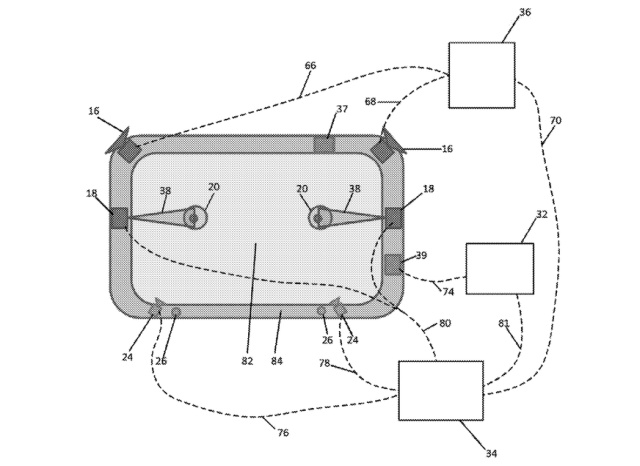
This one describes how Magic Leap could use a pair of cameras inside the glasses to track your eyes and figure out where they’re focusing, which could help enable the most important thing Magic Leap wants to do: use digital light field technology to make CG objects appear to take up real depth inside the real world.
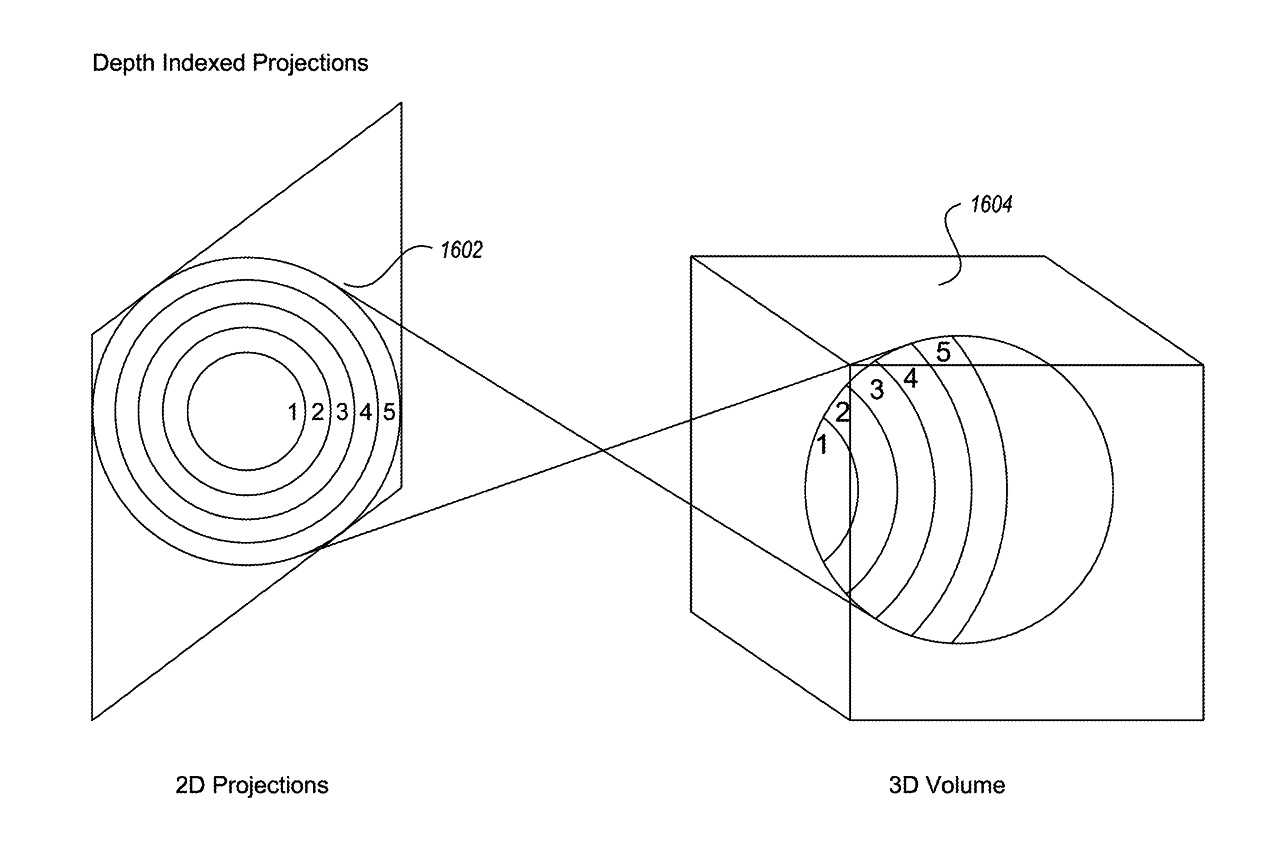
Using fancy optical hardware like microreflectors or diffraction patterning devices or perhaps deformable membrane mirrors — which Schowengerdt had been successfully experimenting with for some time — Magic Leap apparently believes it can let you focus your eyes on a virtual 3D object the same way they focus on objects in real life. Seemingly, it will do so by cutting its 3D objects into slices corresponding to the depth of your gaze, and showing the appropriate one based on where your eyes are actually looking.
Last but not least, there’s also this patent application for a “tactile glove” which lets you literally rub two fingers together to steer a pair of robots while using the headgear, which could more generally be a way to let you interact with the things Magic Leap lets you see. Among Magic Leap’s patent filings, this one is especially intriguing; it admits that the company has actually already built and tested this glove in a research study. Plus, it mentions how the headgear can transition between a see-through augmented reality mode and an opaque one for virtual reality. We could be looking at Google Glass and Oculus Rift competitors in a single device.
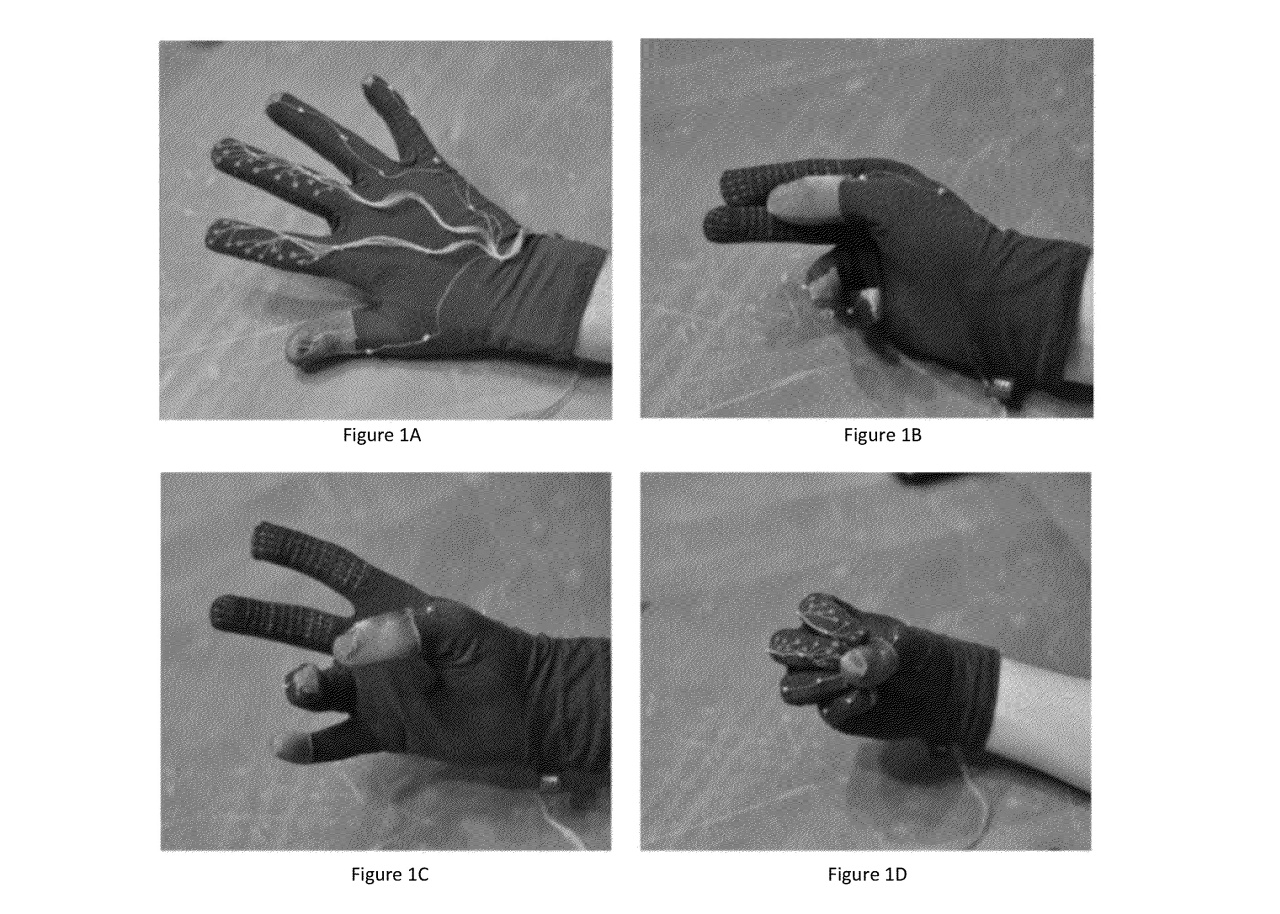
There’s way too much to unpack here, but this should give you some vague idea of what Magic Leap wants to create. But what has the company already built, and what does it hope to build next?
Eyewitness accounts
In an article that largely flew under the radar, John Markoff of The New York Times actually went to see the technology in person back in July. He wrote that he did indeed see a 3D creature floating in midair, through “an elaborate viewer that resembles something from an optometrist’s office.” It’s big, in other words. Markoff also confirmed that the device projects digital light fields onto the viewer’s retina.
Graeme Devine speaks about Magic Leap at Unite 2014.
Though a somewhat less reliable source now that he works for the company, game designer Graeme Devine also suggests the current prototype is pretty gigantic. It’s even called The Beast. “If you’ve ever seen the movie Brainstorm, it’s like the original Brainstorm thing,” he told game developers in August.
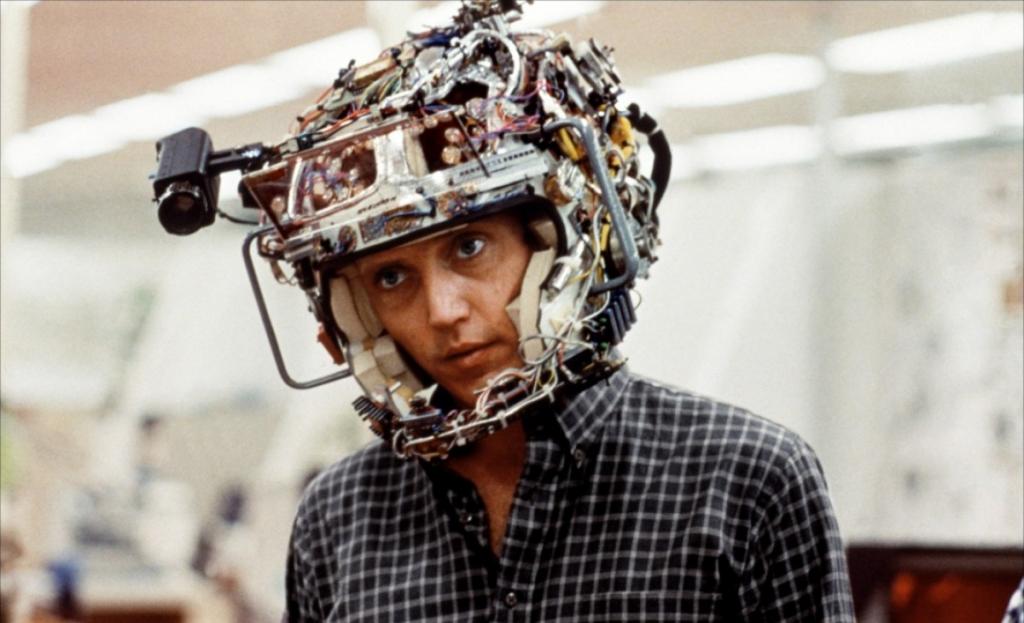
Christopher Walken in Brainstorm (1983).
Job listings
When I took a look at Magic Leap’s job listings, it was clear that the company doesn’t intend for The Beast to stay beastly for long. They’re hiring hardware engineers to rapidly prototype and prepare factory tooling for a new version: one that, several job postings hint, will rely on smartphone style mobile components and the Android operating system to do its job.
And some of those job postings get surprisingly specific about what the company wants. Quad-core mobile processors, cellular radio signals, GPS, noise-cancelling headphones, and 3D depth-sensing cameras all appear to be part of the package. In fact, Magic Leap specifically says there will be “long range depth sensors mounted on a head-mounted device” in order to construct 3D models of large indoor spaces — not unlike Google’s Project Tango. In Magic Leap’s own words: “RGBD range sensors are a big deal, and they will be mounted on the wearable.”

Project Tango.
“We’re going to crush it in eye tracking and recognition,” begins another job posting — which seems to confirm that those, too, weren’t just crazy ideas listed on a patent application.
Meanwhile, another job posting for an audio engineer hints at some intriguing functions for Magic Leap’s tech: voice recognition, telepresence, and “live voice and music transmission and reproduction” so that, presumably, you can feel like you’re in the same room with your favourite band.
Not only will Magic Leap use Android, but it sure sounds like the company intends to literally build its “Cinematic Reality” interface on top of the existing Android Open Source Project and its core applications. That said, though, it also sounds like Magic Leap intends to deliver much of the experience over the web: one job post namedrops “cloud-based applications and services to support Magic Leap’s Cinematic Reality experiences,” and another specifies “browser-based user interfaces” for the company’s cloud services.
And it sounds like Magic Leap hopes to do this on a large scale: “Demonstrated ability to rapidly ramp a complex consumer electronic/electro-optical products to high volumes (i.e. millions of units per year) is a must,” according to a job posting for a supply chain manager.
Here are some other “requests” that stood out to me:
“We want to grab movements and project them through space so that you and your closest friends can live in altered realities together.”
“We want to go deep into finding objects, determining human and animal pose, recognising scenes, identifying and tracking rigid and articulated motions, understanding behaviours, identifying users, finding glints, unveiling intrinsic images and direction of lighting and on and on.”
“We want to do a lot of things with cameras, both for consumer consumption and for providing information to the Augmented Reality displays. We want to stitch panoramas, create tilt-shift videos, hyper-resolution, noise reduction, image filtering of all types and an unending series of cool effects.”
“We want to experiment with alternate ways of scanning objects and scenes and to set up experiments with how AR systems can work with (and you will build out) an entire ecosystem of objects, toys, appliances, robots and especially quadrotors. We want people hacking on new ways of telepresence and mixing AR with specific modalities from medical, to mechanical, to agricultural and construction.”
Several job postings mention that prior experience building quadcopters — a.k.a drones — would be a plus.
Last but not least, two job postings describe an actual game coming to the platform — one that should have steampunk fans champing at the bit. Are you familiar with Dr. Grordbort’s Infalliable Aether Oscillators, also known as Weta Workshop’s line of incredible replica rayguns?
According to the postings, Weta Workshop and Magic Leap are building a “truly next-generation Dr. Grordbort’s first person shooter” where you’ll get to experience the “dynamics of advanced ray guns and wave-weaponry” for yourself.
Particularly notable employees
Beyond Rony Abovitz, Brian Schowengerdt, Graeme Devine, and Brian Wallace, these people seem like pretty important additions to the team:
Gary Bradski, the creator of the Open Source Computer Vision Library (OpenCV), and one of the guys who first taught self-driving cars to see.
Jean-Yves Bouguet, a member of the original Google Street View team, and who led the Indoor Street View project.
Greg Broadmore, the creator of Dr. Grordbort’s raygun-filled world.
Austin Grossman, who penned video game narrative for award-winning titles like System Shock, Deus Ex, and Dishonored.
John Root, a motion capture artist and animator with two decades experience at top video game and film technology companies, including Epic Games (Unreal Tournament 2004), id Software (Doom 3, RAGE), Remedy Entertainment (Alan Wake), and Digital Domain.
Dave Gibbons, comic book writer, artist, and co-creator of Watchmen. He’ll be “developing projects and IP designed to take advantage of the next personal computing platform,” according to this press release.
Andy Lanning, comic book writer, artist, and co-creator of Guardians of the Galaxy. Four years after signing on for Hour Blue, he’s now the company’s official Comic World Ambassador.

Possibly important phrases
Last but not least, I had a peek at Magic Leap’s trademarks, just in case they might be significant. While a lot of them sound like pure marketing, I wasn’t completely disappointed:
FLUTTERPOD or FLUTTERBOARD: “Virtual flying objects that are alive; virtual reality experience; electronic comic books.” These appear the be the phrases Magic Leap has tentatively coined to refer to what you see projected onto the real world. It’s probably worth noting that “Flutterpod” is one of the keywords Magic Leap selected to direct search engines to magicleap.com.
THE MAGIC SHOP: “Retail store services in the field of entertainment featuring pre-recorded audio and audiovisual works and related merchandise for use with Magic Leap hardware, provided via the internet and other computer and electronic communication networks.” Sounds like an app store.
SENSORYWARE: What Magic Leap will probably call the head-mounted display and related peripherals.
DYNAMIC DIGITIZED LIGHT-FIELD SIGNAL: Already in use in Magic Leap’s press releases as a catch-all for the company’s visual technology.
A NEW OPERATING SYSTEM FOR REALITY: “A web hosting platform for users to participate in and contribute to the creation of virtual worlds.” Intriguing.
MAGIC LEAP’S MONSTER BATTLE: One of the first games for the platform. Graeme Devine described it in August as a shared world where players each have customisable virtual pets that follow their finger and can (presumably) battle with one another. There’s also this tweet to consider:
Why we are doing this: “Please make it possible for my brothers and I to have real life Pokemon battles in our backyard.” – Alex
— Magic Leap, Inc. (@magicleap) October 21, 2014
ROADKILL WARRIORS: Listed under “Comic Books.” Perhaps the title of a specific augmented reality comic book coming to the platform?
COSMIC CODE AUTHORITY: A stamp of approval that appears to date back to Magic Leap’s original Hour Blue graphic novel from 2010… yet the trademark application was just filed in 2013. Maybe we’ll see it again?
FUNONE: Unclear, but seems to have something to do with games.
TAKE A MAGIC LEAP, WHAT’S YOUR MAGIC LEAP, WELCOME TO THE EXPERIENCE, THE WORLD IS YOUR NEW DESKTOP, THE WORLD IS YOUR NEW SILVER SCREEN, A ROCKETSHIP FOR THE MIND, SOCIAL CINEMATIC EXPERIENCE, COLLECTIVE IMAGINATION, CONNECTED INNER SPACE: Marketing.
IMAGINE IF THE IMAGINATION COULD IMAGINE: I’m trying, but I can’t quite picture it.

The big picture
After spending my weeknights tracking down anything and everything I could find about Magic Leap, a picture began to form. Remember when Mark Zuckerberg justified Facebook’s $US2B purchase of virtual reality pioneer Oculus VR by calling it the next great communication platform? It sounds like Magic Leap wants to do the same thing — only layered on top of the real world.
It sounds like they hope to do that with a lightweight headset mostly indistinguishable from eyeglasses, save a fibre optic cable running down to a pack where the projector (and possibly the battery and other processing components) are housed. It sounds like that device will be absolutely jam-packed with cameras and sensors to exactly know where it is, and which direction it’s pointing, inside a depth-mapped recreation of the real world. It sounds like it will run Android, have its own app store, and focus on games and interactive comic books to start.
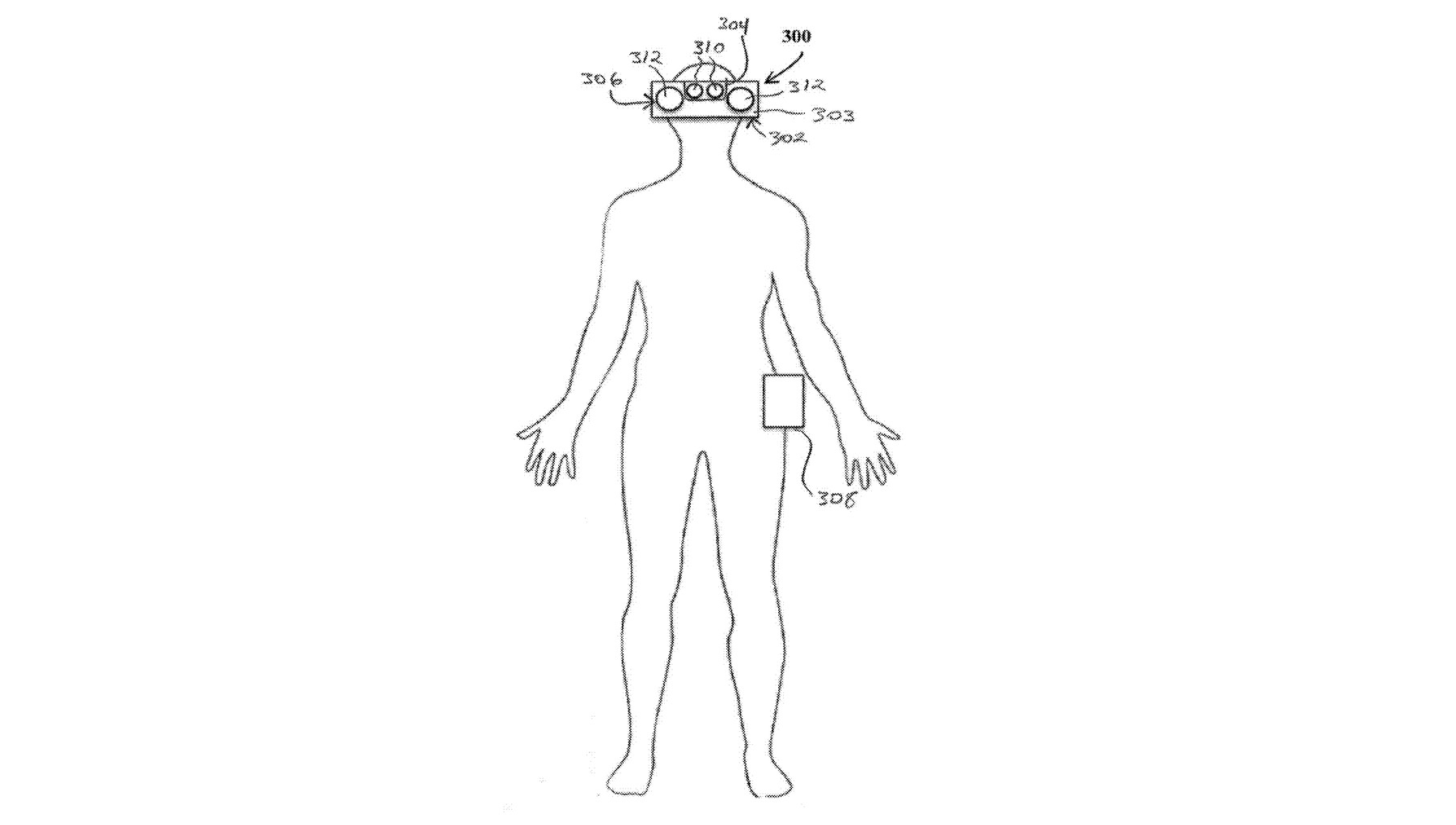
In other words, it sounds absolutely bonkers. But $US542 million in funding and Google on the board of directors suggests it’s pretty damn real, and that it might only be a matter of time until Magic Leap can make it small enough to comfortably wear. Which could put Facebook and Google in one heck of a battle for the future of wearable computing, I imagine.
I don’t know for sure. I’ve never seen Magic Leap’s technology for myself. When I reached out to Magic Leap’s CEO and other employees, I didn’t get anywhere. And even if it exists, the idea won’t necessarily pan out. But if Magic Leap has solved even some of the key issues keeping us from seeing computer-generated images seamlessly superimposed onto the real world, I’ll be pumped. Show me the magic, Magic Leap. Make me a believer.
Pictures: Magic Leap, diagrams via USPTO
